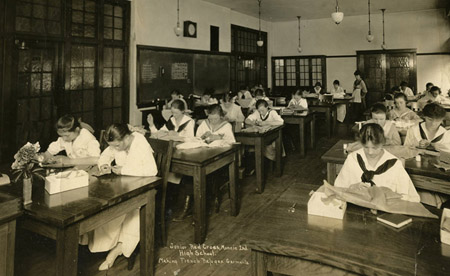| << Chapter < Page | Chapter >> Page > |

Ethnography is the extended observation of the social perspective and cultural values of an entire social setting. Ethnographies involve objective observation of an entire community.
The heart of an ethnographic study focuses on how subjects view their own social standing and how they understand themselves in relation to a community. An ethnographic study might observe, for example, a small American fishing town, an Inuit community, a village in Thailand, a Buddhist monastery, a private boarding school, or Disney World. These places all have borders. People live, work, study, or vacation within those borders. People are there for a certain reason and therefore behave in certain ways and respect certain cultural norms. An ethnographer would commit to spending a determined amount of time studying every aspect of the chosen place, taking in as much as possible.
A sociologist studying a tribe in the Amazon might watch the way villagers go about their daily lives and then write a paper about it. To observe a spiritual retreat center, an ethnographer might sign up for a retreat and attend as a guest for an extended stay, observe and record data, and collate the material into results.
In 1924, a young married couple named Robert and Helen Lynd undertook an unprecedented ethnography: to apply sociological methods to the study of one US city in order to discover what “ordinary” Americans did and believed. Choosing Muncie, Indiana (population about 30,000), as their subject, they moved to the small town and lived there for eighteen months.
Ethnographers had been examining other cultures for decades—groups considered minority or outsider—like gangs, immigrants, and the poor. But no one had studied the so-called average American.
Recording interviews and using surveys to gather data, the Lynds did not sugarcoat or idealize American life (PBS). They objectively stated what they observed. Researching existing sources, they compared Muncie in 1890 to the Muncie they observed in 1924. Most Muncie adults, they found, had grown up on farms but now lived in homes inside the city. From that discovery, the Lynds focused their study on the impact of industrialization and urbanization.
They observed that Muncie was divided into business class and working class groups. They defined business class as dealing with abstract concepts and symbols, while working class people used tools to create concrete objects. The two classes led different lives with different goals and hopes. However, the Lynds observed, mass production offered both classes the same amenities. Like wealthy families, the working class was now able to own radios, cars, washing machines, telephones, vacuum cleaners, and refrigerators. This was an emerging material new reality of the 1920s.
As the Lynds worked, they divided their manuscript into six sections: Getting a Living, Making a Home, Training the Young, Using Leisure, Engaging in Religious Practices, and Engaging in Community Activities. Each chapter included subsections such as “The Long Arm of the Job” and “Why Do They Work So Hard?” in the “Getting a Living” chapter.
When the study was completed, the Lynds encountered a big problem. The Rockefeller Foundation, which had commissioned the book, claimed it was useless and refused to publish it. The Lynds asked if they could seek a publisher themselves.
Middletown: A Study in Modern American Culture was not only published in 1929, but became an instant bestseller, a status unheard of for a sociological study. The book sold out six printings in its first year of publication, and has never gone out of print (PBS).
Nothing like it had ever been done before. Middletown was reviewed on the front page of the New York Times . Readers in the 1920s and 1930s identified with the citizens of Muncie, Indiana, but they were equally fascinated by the sociological methods and the use of scientific data to define ordinary Americans. The book was proof that social data was important—and interesting—to the American public.


Notification Switch
Would you like to follow the 'Introduction to sociology' conversation and receive update notifications?